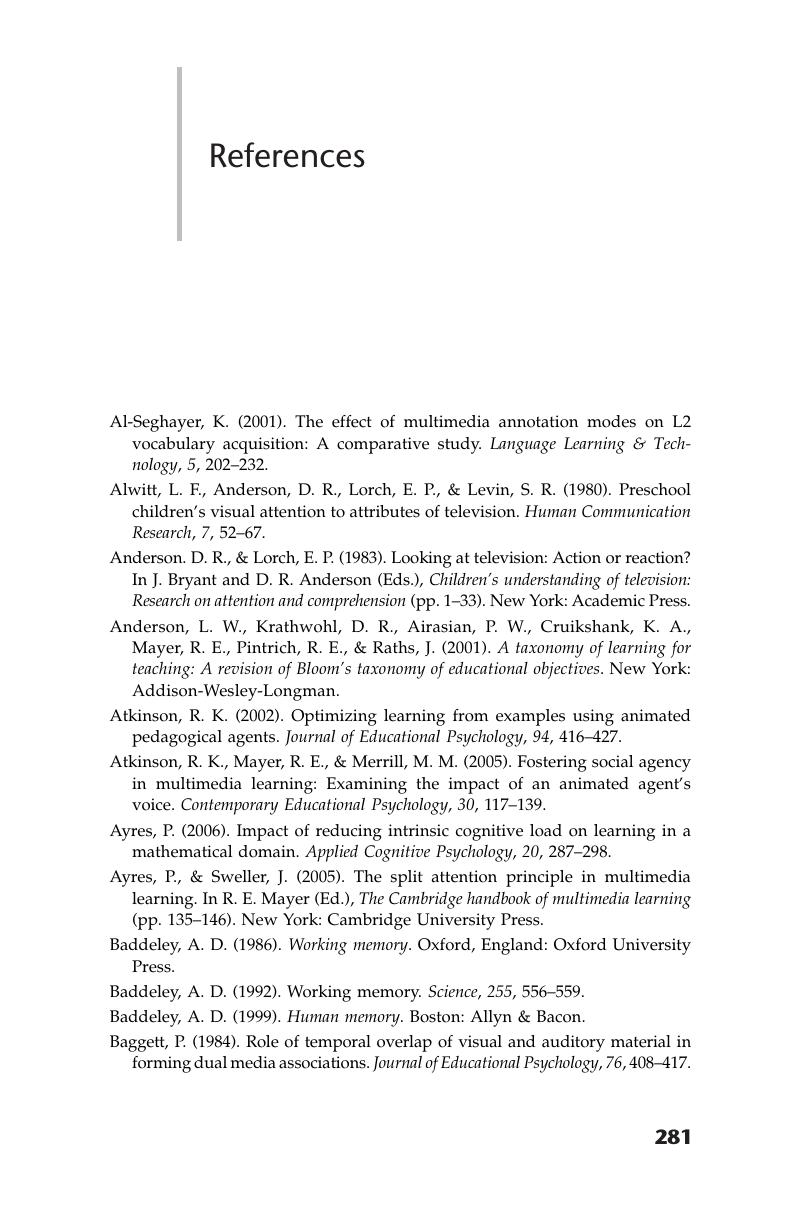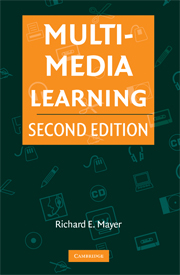Book contents
- Frontmatter
- Contents
- PREFACE
- SECTION I INTRODUCTION TO MULTIMEDIA LEARNING
- SECTION II PRINCIPLES FOR REDUCING EXTRANEOUS PROCESSING IN MULTIMEDIA LEARNING
- SECTION III Principles for Managing Essential Processing in Multimedia Learning
- SECTION IV PRINCIPLES FOR FOSTERING GENERATIVE PROCESSING IN MULTIMEDIA LEARNING
- SECTION V CONCLUSION
- REFERENCES
- AUTHOR INDEX
- SUBJECT INDEX
- References
REFERENCES
- Frontmatter
- Contents
- PREFACE
- SECTION I INTRODUCTION TO MULTIMEDIA LEARNING
- SECTION II PRINCIPLES FOR REDUCING EXTRANEOUS PROCESSING IN MULTIMEDIA LEARNING
- SECTION III Principles for Managing Essential Processing in Multimedia Learning
- SECTION IV PRINCIPLES FOR FOSTERING GENERATIVE PROCESSING IN MULTIMEDIA LEARNING
- SECTION V CONCLUSION
- REFERENCES
- AUTHOR INDEX
- SUBJECT INDEX
- References
Summary

- Type
- Chapter
- Information
- Multimedia Learning , pp. 281 - 294Publisher: Cambridge University PressPrint publication year: 2009



